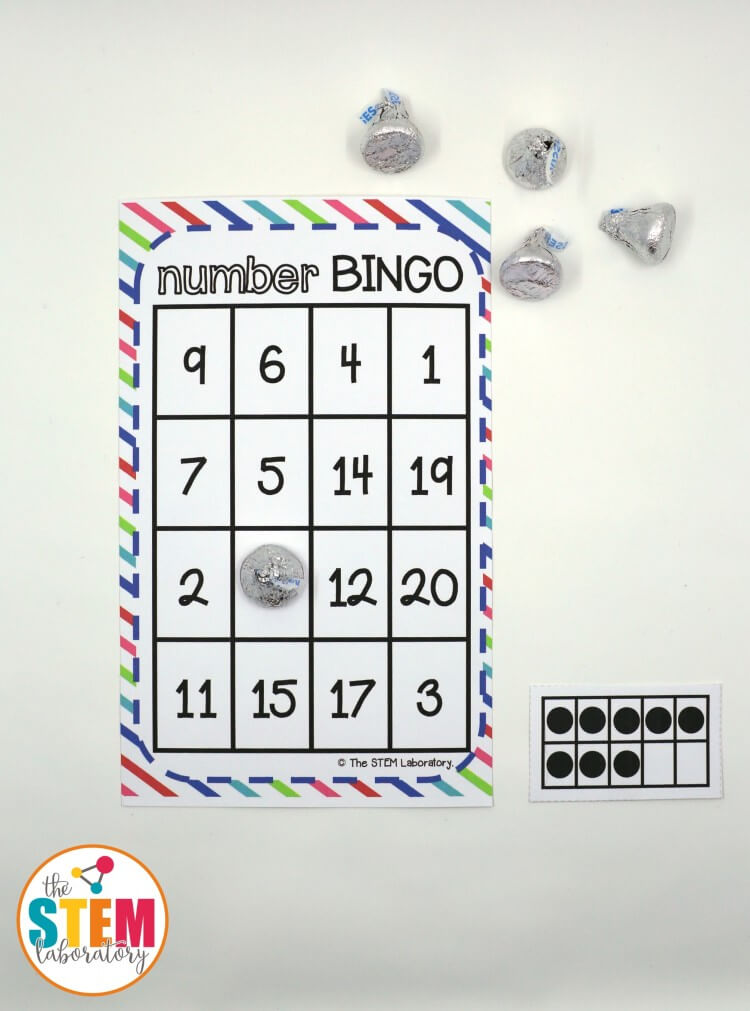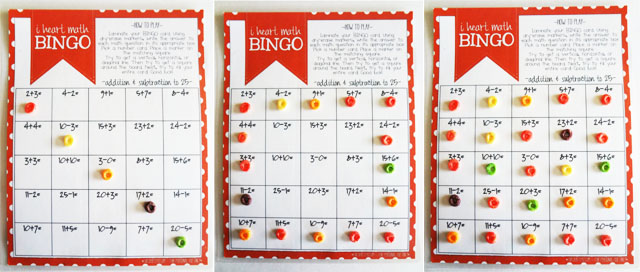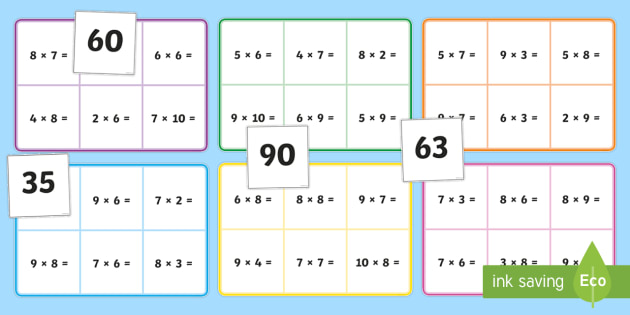Maths Bingo Game
This QQI BINGO produces a BINGO activity for a set of questions which you type in. You can choose a bingo game for a 3x3 card (requires 16 questions) or a 4x4 card (requires 25 questions). In each case a set of boxes will appear in which you can type your questions. Instruction Text In this box type any question that you want to appear in.
Happy Thursday, readers!

Today I’m excited to bring you a fun math game you can use right away in your classroom. Our Inclusion Lab guest of the week is Nick Jakubowski from Bingomania, who contacted me a while back and offered to share the math bingo cards he created for classroom use. Nick’s going to start us off by introducing the cards and sharing a brief description of math bingo. I’ve also invited Nicole Eredics of The Inclusive Class to add a few ideas on adapting and modifying the game for students with special needs. At the end of the post is a link to the printable cards–print them out on heavy cardstock to start having math bingo fun in your own classroom.
Over to you, Nick!
Free Online Bingo Math Game
- Continue playing until one player as 4-in-a-row, Bingo. You can also play four corners, make a square, cover the whole game board, etc. This interactive shapes game is a great addition to kindergarten math, math for preschoolers, or grade 1 math. Parents and homeschoolers can use it at home for some educational fun and extra.
- Bingo Cards Math Bingo Cards These bingo cards provide a great resource for those wanting to improve their basic math skills. They are an excellent teaching tool for grade school teachers, study groups, and remote learning math.
Math Bingo Games Printable Template
***
Balancing the math needs of an inclusive classroom can be quite challenging. Some children pick up math skills extremely quickly, while others struggle. A child with special needs can have a particularly difficult time seeing their peers rush ahead of them.
The new Common Core standards have presented new challenges, too. The times when certain concepts are introduced have been shuffled around. Some have moved later and others much earlier. Most teachers are required to teach to the Common Core standards–and to overcome the challenges of teaching math the new way, some educators are turning to games that can help teach the concepts.
Children learn best when they are having fun. Simple observation of children during recess can show that. One great way to teach elementary school math skills to students with and without special needs is through the game of Math Bingo. It’s played very similarly to regular bingo:
- The caller gives the players a math problem.
- The players then solve the problem, look for the answer on the bingo card, and cover the appropriate spot with a counter.
- When someone makes a line of five in a row, they win the game.
It’s a simple game, but it can be tweaked to cover quite a number of math topics. Most teachers have math question banks that they draw on for generating quizzes, and these same questions can be used for math bingo. The tricky part is generating cards that cover answer range. One way to do this is to add more of the same number to the cards. For instance, if you are testing addition problems with answers ranging from 0 to 10, you can sprinkle in multiple numbers. Have the students choose one number to cover the available options. This can also keep students who excel in math entertained by focusing on the strategy of the game after they have mastered the problems.
Bingo also has an added advantage: It is a very fair game. So long as the cards are sufficiently random and all possible cards have an equal chance of winning, all of the players can feel like they have an equal chance of winning the game. By combining play and education in this manner, students will be more engaged to learn math skills so they can beat the game.
Here are some additional variations and tips that you can try in your classroom:
- Combine your math bingo set with blocks, ten frames, number lines, or other tools that you’re using to teach Common Core math concepts that they’ll see on their tests.
- Pair up children who have difficulty with math and those who do not so they can teach how to get the correct answer.
- Instead of making a straight line on the bingo card, ask students to make shapes on the card instead such as crosses or diamonds.
Bingo can be used for several other domains as well, such as letter recognition, short word recognition, or even things like the shapes of states if you can print the cards right! Try it out with your students and they may find that math time is over before they know it and that they’re having fun with numbers.
***
You can download the math bingo cards at the end of this post–but first, here’s inclusion expert Nicole Eredics with some additional ideas on adapting the game for all learners. She’s broken them down into two groups: accommodationsfor learners who understand the grade-level work but need support accessing it, and modificationsfor learners who are working below grade-level.

Accommodations
- Teacher calls out the number and holds up a card with the number on it
- For students who need extra time for processing, provide them with counting chips, number line or calculator so they can keep up with the class
- Help student focus on only a few equations at a time. When the teacher calls out “B, 12”, then the student will cover up all the other columns.
Maths Bingo Game Year 2
Modifications

- Create an alternate board with the matching answers, not equations (if the teacher call out the number 3, the student looks for the number 3)
- Create a board with answers printed in a matching color. Students have to match color of number to color of equations on the board.
- Teacher prints equation and answer in a box.
- Create a board with simplified equations (ie. 3+1, 4+1, 5+1)
(Important reminder: any accommodation or modification that is made would be based on the goals specified in the student’s IEP.)
Huge thanks to Nick and Nicole for being here today and sharing a great way to help make math learning fun. Here’s a link to the free printable cards Nick developed; feel free to share with other teachers who might like them.